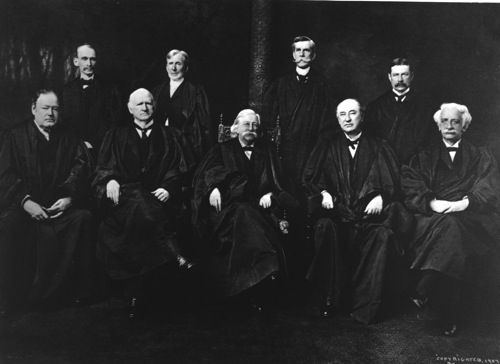
The Lace House Laundry

The Fuller Court (1906-1909). Seated, from left to right: Justices Edward Douglas White, John Marshall Harlan, and Chief Justice Melville Fuller, and Justices David J. Brewer and Rufus Peckham. Standing, from left to right: William R. Day, Joseph McKenna, Oliver Wendell Holmes, Jr. and William Henry Moody.

The Brandeis Brief did not make legal arguments, but instead, presented excerpts from social science writings and other data in support of the Oregon statute.
![Brandeis argued that because of the “physical differences between men and women” there was a “bad effect of long hours on health.” Indeed, there were “specific evil effects on childbirth and female functions” from working too long. Therefore, the state could justify the maximum hour law to “protect[] women” and “future generations.”](https://conlaw.us/wp-content/uploads/2019/08/1908-Muller-v-Oregon-Brandeis-Brief-Excerpt.png?v=1568568273)
Brandeis argued that because of the “physical differences between men and women” there was a “bad effect of long hours on health.” Indeed, there were “specific evil effects on childbirth and female functions” from working too long. Therefore, the state could justify the maximum hour law to “protect[] women” and “future generations.”
Oregon made it a crime to employ female workers for more than ten hours a day. The owner of the Lace House Laundry challenged the law as a violation of the Fourteenth Amendment. Naturally, he relied on the recent precedent of Lochner, which found that limiting bakers to ten hours per day violated the Due Process Clause. Yet, only three years later, Muller unanimously upheld Oregon’s maximum- hour law for women.
Justice Brewer wrote the majority opinion in Muller. He explained that “the difference between the sexes [can] justify a different rule respecting a restriction of the hours of labor.”